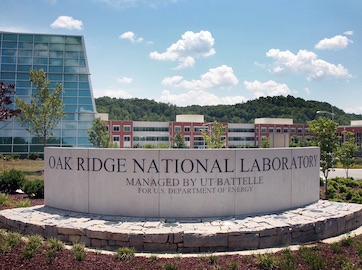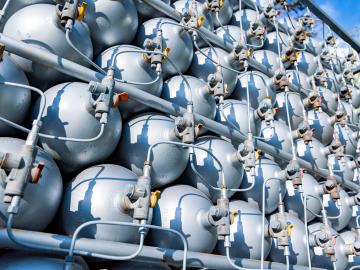Filter Results
Researcher
- Corson Cramer
- Steve Bullock
- Brian Post
- Chad Steed
- Erdem Asa
- Greg Larsen
- Jim Tobin
- Junghoon Chae
- Mike Zach
- Nicholas Peters
- Omer Onar
- Sam Hollifield
- Travis Humble
- Trevor Aguirre
- Vivek Sujan
- Vlastimil Kunc
- Aaron Myers
- Adam Stevens
- Ali Passian
- Andrew F May
- Ben Garrison
- Brad Johnson
- Brian Weber
- Brian Williams
- Bruce Hannan
- Chris Tyler
- Dan Coughlin
- David J Mitchell
- David Olvera Trejo
- Dustin Gilmer
- Harper Jordan
- Hsin Wang
- Hsuan-Hao Lu
- Isabelle Snyder
- J.R. R Matheson
- James Klett
- Jason Jarnagin
- Joel Asiamah
- Joel Dawson
- Jordan Wright
- Joseph Lukens
- Josh Crabtree
- Justin Cazares
- Justin Griswold
- Justin West
- Kevin Spakes
- Kim Sitzlar
- Lilian V Swann
- Loren L Funk
- Louise G Evans
- Luke Chapman
- Luke Koch
- Mark Provo II
- Mary A Adkisson
- Matt Larson
- Mengdawn Cheng
- Mingyan Li
- Muneer Alshowkan
- Nance Ericson
- Nedim Cinbiz
- Pablo Moriano Salazar
- Padhraic L Mulligan
- Paula Cable-Dunlap
- Polad Shikhaliev
- Raymond Borges Hink
- Richard L. Reed
- Robert Stewart
- Rob Root
- Ryan Kerekes
- Sally Ghanem
- Samudra Dasgupta
- Scott Smith
- Srikanth Yoginath
- Steven Guzorek
- Sudarsanam Babu
- Sunil Subedi
- Sydney Murray III
- Theodore Visscher
- T Oesch
- Varisara Tansakul
- Vasilis Tzoganis
- Vladislav N Sedov
- Yacouba Diawara
- Yaosuo Xue
- Yonghao Gui
- Yun Liu

QVis is a visual analytics tool that helps uncover temporal and multivariate variations in noise properties of quantum devices.

Using all polymer formulations, the PIP densification is improved almost 70% over traditional preceramic polymers and PIP material leading to cost and times saving for densifying ceramic composites made from powder or fibers.

Through the use of splicing methods, joining two different fiber types in the tow stage of the process enables great benefits to the strength of the material change.

Wire arc additive manufacturing has limited productivity and casting processes require complex molds that are expensive and time-consuming to produce.

Modern automobiles are operated by small computers that communicate critical information via a broadcast-based network architecture called controller area network (CAN).

We have developed an aerosol sampling technique to enable collection of trace materials such as actinides in the atmosphere.

Spherical powders applied to nuclear targetry for isotope production will allow for enhanced heat transfer properties, tailored thermal conductivity and minimize time required for target fabrication and post processing.

ORNL will develop an advanced high-performing RTG using a novel radioisotope heat source.


